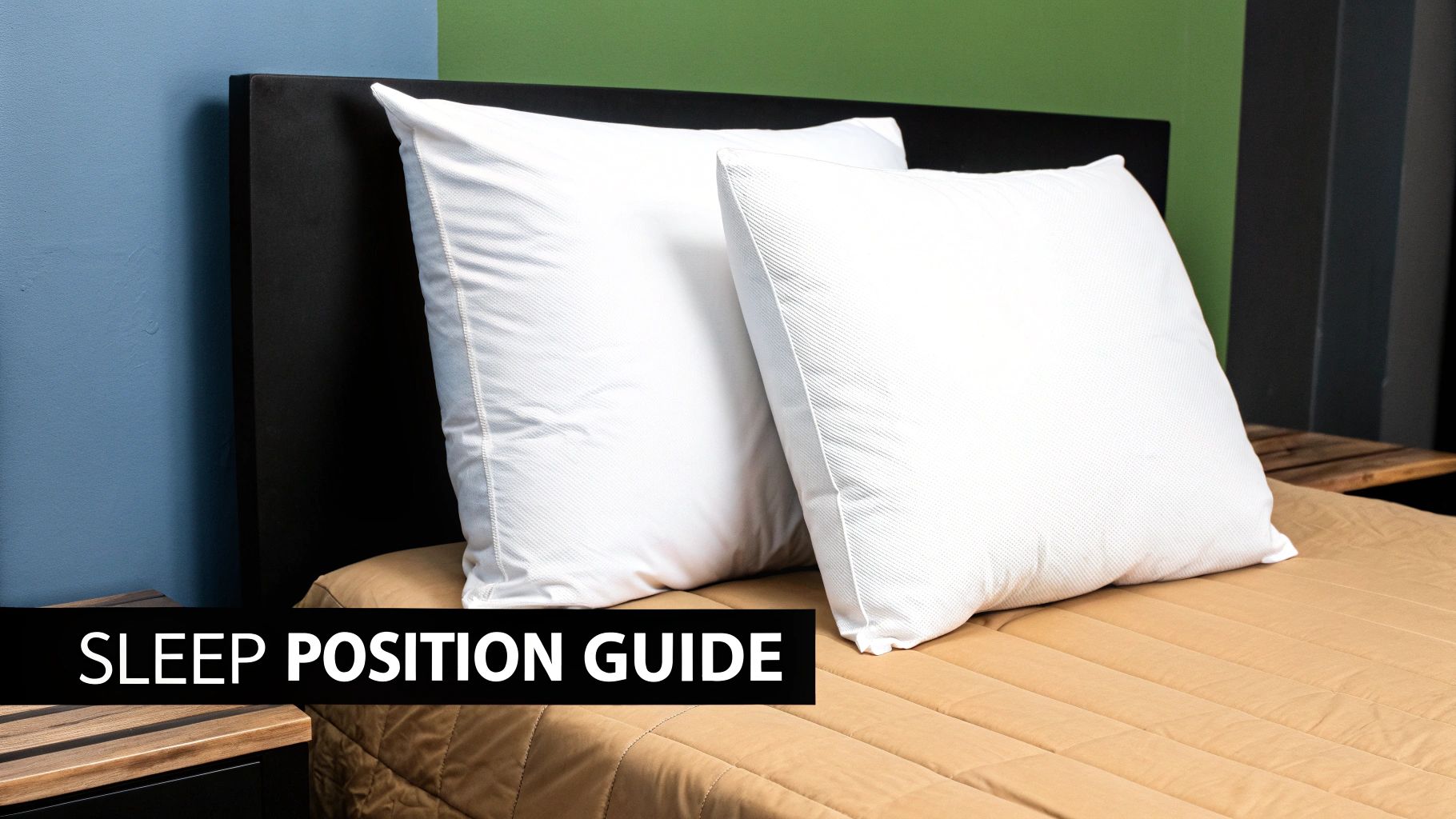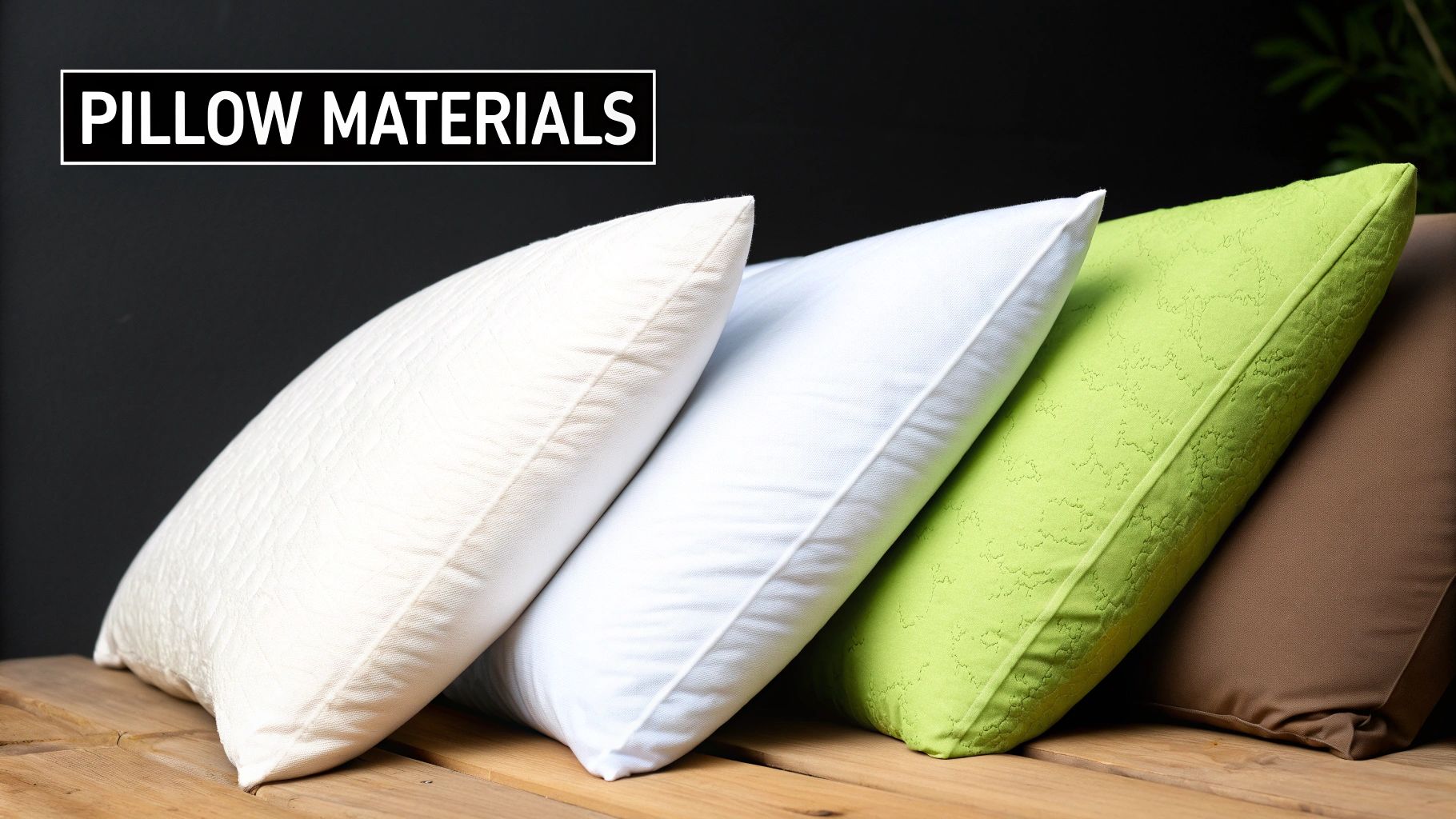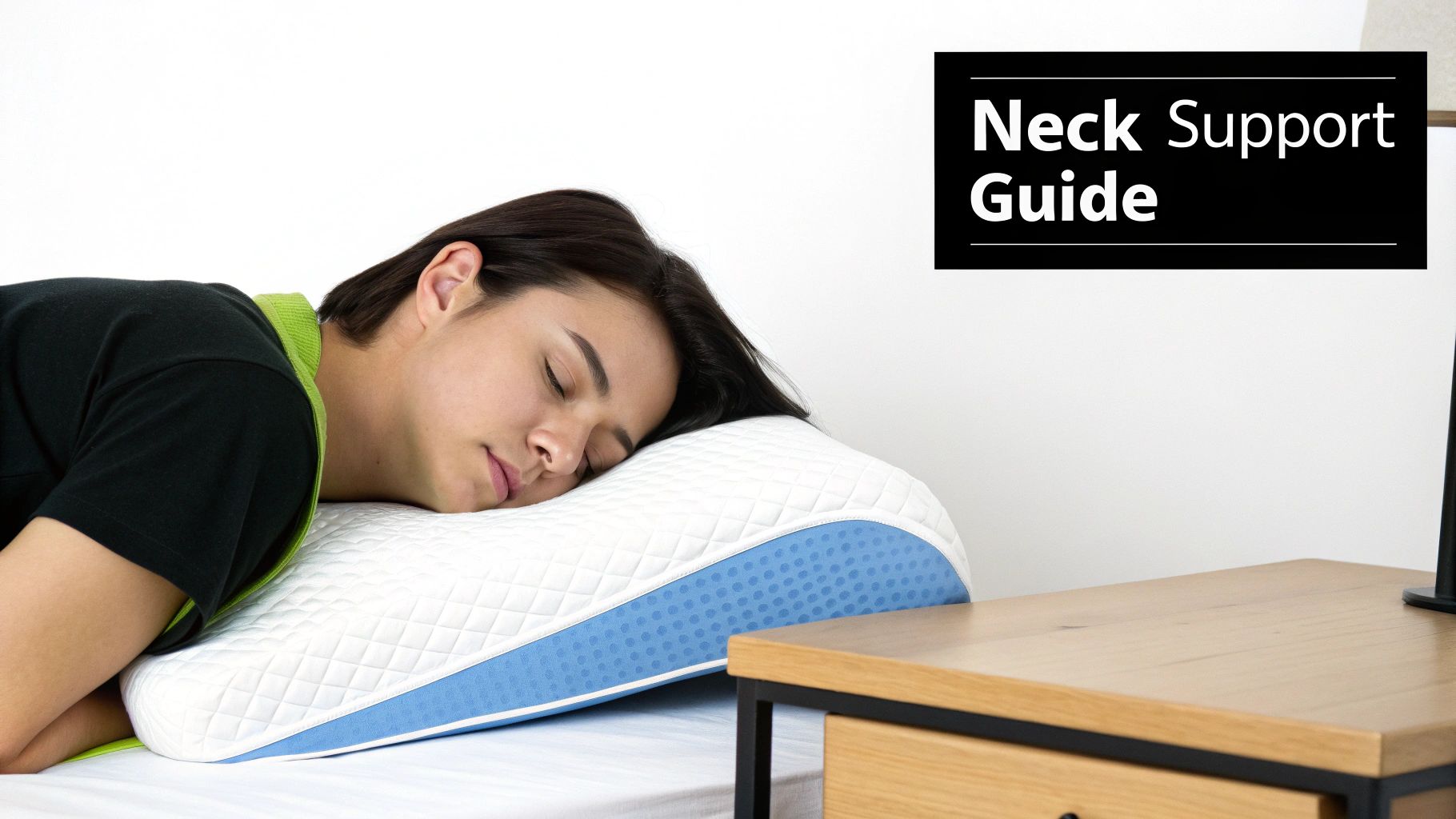Waking up with a stiff neck isn't the best way to start your day, but for many, it's a daily reality. The culprit is often the pillow you've been sleeping on for years. Learning how to choose pillows that truly support you can be the difference between a restless night and waking up feeling refreshed and pain-free. The most crucial factor? Your favourite sleeping position.
Your go-to sleep style dictates the pillow height (loft) and firmness needed to keep your head, neck, and spine in a healthy, straight line. This guide will walk you through everything you need to know, starting with the most important information first, so you can make a confident choice tonight.

Step 1: Match Your Pillow to Your Sleeping Position
Before you get lost in the world of memory foam and down feathers, let's focus on what matters most: your sleep posture. A pillow's main job is to fill the gap between your head and the mattress, ensuring your spine stays neutral. That gap changes dramatically depending on whether you sleep on your side, back, or stomach.

Side Sleepers: Go for High Loft and Firm Support
Most people are side sleepers. This position creates the largest gap between your head and the mattress, so you need a thicker, firmer pillow to fill that space and prevent your head from sagging.
- Practical Example: Sarah, a side sleeper with broad shoulders, was waking up with neck pain. Her soft, flat pillow was causing her head to tilt downwards all night. By switching to a high-loft, firm memory foam pillow, she filled the gap between her ear and shoulder, instantly aligning her spine and alleviating the pain.
- Actionable Tip: Lie on your side and ask someone to check your alignment. Your nose should be in line with the center of your body. If it’s pointing down, your pillow is too soft. Tilting up? It’s too firm or high. Find more tailored advice in our guide to the best pillows for side sleepers.
Back Sleepers: Aim for Medium Loft and Cradling Support
If you sleep on your back, you need a pillow that supports the natural curve of your neck without pushing your head too far forward. A medium-loft, medium-firm pillow is usually the perfect fit.
- Practical Example: Mark, a back sleeper, was using a thick pillow that forced his chin towards his chest, causing strain and snoring. He switched to a contoured pillow with a lower dip for his head and a raised edge for his neck, which supported its natural curve perfectly.
- Actionable Tip: Avoid overly thick pillows. Your goal is to keep your head and neck level with your upper back, not propped up at an angle.
Stomach Sleepers: Choose a Thin, Soft Pillow (or None at All)
Sleeping on your stomach is the most stressful position for your spine because it forces your neck into a twisted position. The best way to minimise strain is to use a very thin, soft pillow or even no pillow at all.
- Practical Example: For stomach sleepers, a thick pillow is the enemy. It will crane your neck backwards into an unnatural arch. The goal is to keep your head as close to the mattress as possible to maintain a more neutral spine.
- Actionable Tip: Place a thin pillow under your hips and stomach. This can help prevent your lower back from sinking and arching, which is a common source of back pain for stomach sleepers.
Pillow size also matters. To ensure your choice fits your bed perfectly, check out our guide to Australian pillow dimensions.
Step 2: Select the Right Pillow Filling Material
Now that you know the right height and firmness for your sleep style, it's time to choose the filling. The material inside your pillow determines its feel, breathability, and support.

Memory Foam and Latex: The Contouring Champions
Memory Foam is known for its slow-sinking feel that moulds perfectly to your head and neck, offering exceptional pressure relief. This makes it a fantastic choice for side sleepers and anyone dealing with neck pain. Newer versions often include gel infusions or perforations to improve airflow and prevent overheating. We explore this in our article on the benefits of a bamboo memory foam pillow.
Latex provides a more buoyant, responsive feel. It springs back quickly and offers consistent support without the "sinking" sensation. Latex is also naturally breathable and hypoallergenic, making it ideal for hot sleepers and allergy sufferers.
Down and Polyester: The Soft and Simple Options
Down and Feather pillows offer that classic, cloud-like softness you find in luxury hotels. They are incredibly light and mouldable. However, they can trigger allergies and require more maintenance to keep them fluffy and clean.
Polyester Fibre-fill is a synthetic alternative that mimics the softness of down but is hypoallergenic and easy to wash. While these pillows are budget-friendly, they tend to flatten more quickly and may need replacing sooner than other types.
Comparing Common Pillow Fill Materials
| Material | Feel & Support | Best For | Average Lifespan | Price Range |
|---|---|---|---|---|
| Memory Foam | Dense, contouring, slow-sinking feel. Excellent pressure relief. | Side sleepers, people with neck pain. | 2–4 years | Mid to High |
| Latex | Bouncy, responsive, supportive lift. Sleeps cool. | Hot sleepers, allergy sufferers, combination sleepers. | 3–5 years | Mid to High |
| Down/Feather | Ultra-soft, lightweight, mouldable. Classic 'cloud' feel. | Stomach and back sleepers who love softness. | 2–5+ years | Mid to High |
| Polyester/Fibre-fill | Soft, light, compressible. Down-like feel. | Budget-conscious shoppers, allergy sufferers, guest rooms. | 1–2 years | Low to Mid |
Step 3: Consider Your Specific Health Needs
Your pillow can be a powerful tool for improving your health, especially if you deal with allergies or chronic pain. Knowing how to choose pillows with your wellbeing in mind can transform your sleep quality.

Relief for Allergies and Asthma
If you wake up stuffy and congested, your pillow could be harbouring dust mites, mould, and other allergens. Hypoallergenic pillows use materials that naturally resist these irritants.
- Best Materials: Look for natural latex, memory foam, or synthetic fibres like microfibre. Many premium pillows also feature bamboo covers, which are naturally antibacterial and moisture-wicking.
- Actionable Tip: Always use a zippered, washable pillow protector. It acts as a barrier against allergens and extends the life of your pillow. Explore more options in our list of the top hypoallergenic bedding materials.
Support for Neck and Shoulder Pain
Waking up sore is a clear sign your pillow isn't providing proper support. Ergonomic and contour pillows are specifically designed to promote healthy spinal alignment.
These pillows often feature a curved shape that cradles your head while supporting the natural curve of your neck. Memory foam is a popular choice for its ability to reduce pressure points. For a more comprehensive approach to rest, some people also explore supplements for better sleep to help their body recover overnight.
When Should You Replace Your Pillow?
Even the best pillow won't last forever. Over time, fillings break down, and the pillow loses its supportive qualities while accumulating allergens. As a general rule, you should replace your pillow every 1–2 years.
Simple Signs It's Time for a New Pillow
- Lumps and Bumps: The filling feels uneven or clumpy.
- Visible Stains: Yellowish stains from sweat and oils indicate bacteria buildup.
- The Fold Test: Fold your pillow in half. If it doesn't spring back to its original shape, its supportive structure is gone.
- Waking Up Sore: If your neck or shoulder pain has returned, your pillow is likely the cause.
A study from The University of Manchester found that after two years, up to one-third of a pillow's weight can consist of dead skin, dust mites, and their droppings. Replacing your pillow regularly is crucial for both support and hygiene. To learn more, read our detailed guide on how often you should replace your pillow.
Conclusion: Making Your Final Decision
You now have all the information you need to choose a pillow with confidence. Remember to prioritise your sleeping position first, then select a material and consider any specific health needs.
Final Checklist Before You Buy
- Sleep Style: Is the loft and firmness right for you?
- Material: Does the filling match your comfort preferences (e.g., contouring vs. soft)?
- Trial Period: Does the company offer a sleep trial or a good return policy? The only way to know for sure is to sleep on it.
- Budget: Great pillows are available at every price point. Our bamboo memory foam pillows offer premium features without the premium price tag.
Investing in the right pillow is an investment in your health, energy, and overall wellbeing. For more on how sleep quality affects your daily life, you might find research on topics like melatonin and collagen for better sleep insightful.
Ready to find the pillow that’s just right for you?

